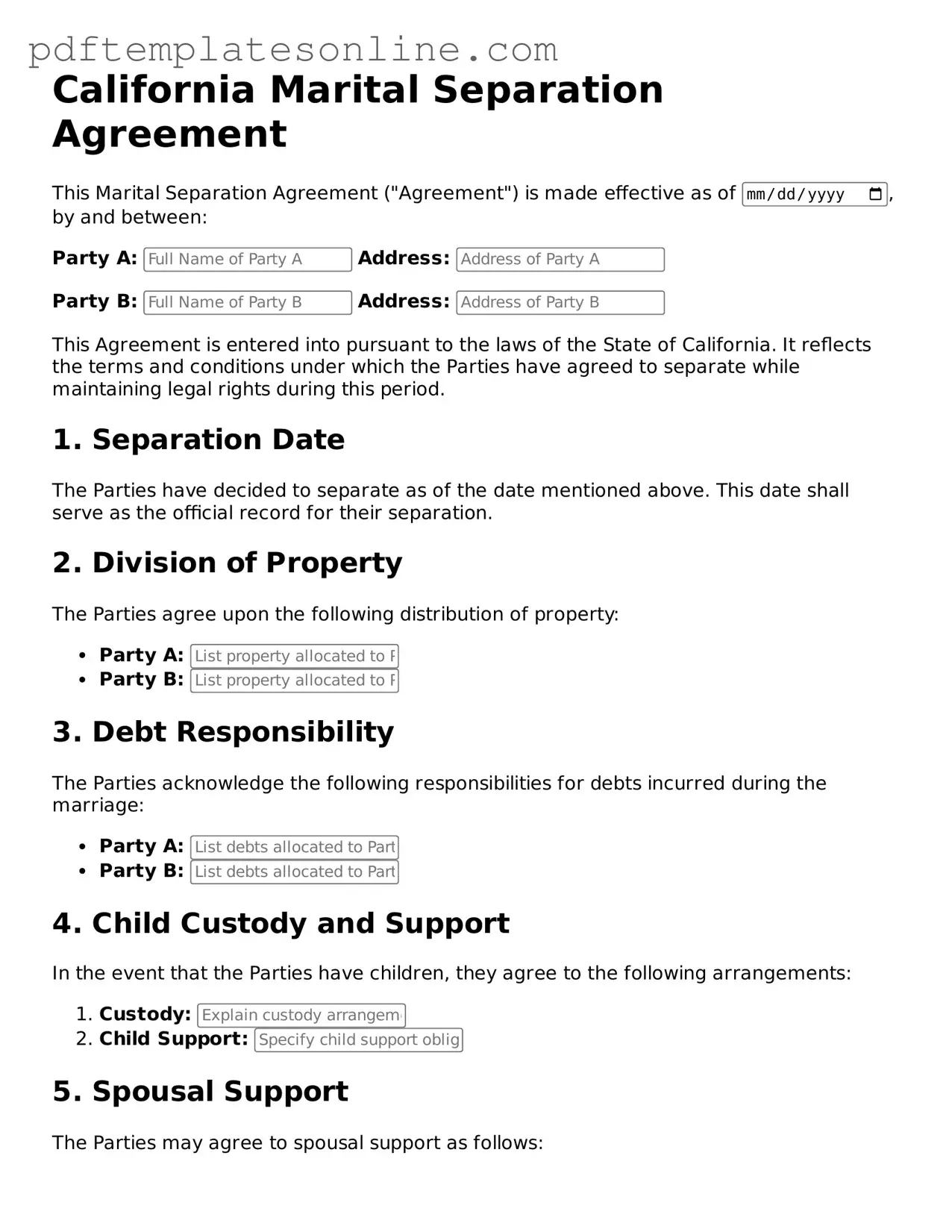Filling out the California Marital Separation Agreement form can be a daunting task. Many people make common mistakes that can lead to confusion or complications down the line. Here are ten mistakes to avoid.
One frequent error is not providing complete information. When filling out the form, every section must be thoroughly completed. Leaving blanks can lead to delays or even rejection of the agreement. It's crucial to ensure that all required fields are filled in accurately.
Another common mistake is misunderstanding the terms used in the agreement. Some individuals may not fully grasp concepts like "community property" or "separate property." Misinterpretation can lead to unfair asset division. Taking the time to understand these terms can prevent significant issues later.
Many people also fail to consider the tax implications of their separation. Not accounting for how asset division affects taxes can lead to unexpected financial burdens. Consulting with a tax professional before finalizing the agreement is wise.
Not including all assets and debts is another pitfall. Some individuals might overlook smaller assets or debts, thinking they are insignificant. However, every asset and debt should be documented to ensure a fair division and to avoid future disputes.
Inaccurate valuations of assets can also be problematic. People often underestimate or overestimate the value of property, vehicles, or other assets. Getting a professional appraisal can provide a more accurate picture and help both parties agree on fair values.
Failing to address spousal support is another mistake. Some individuals may assume support won’t be necessary, but it’s important to discuss and outline any potential support obligations in the agreement. This can prevent misunderstandings and financial strain later on.
Another error is neglecting to specify the division of responsibilities regarding children. If children are involved, it’s essential to clearly outline custody arrangements, visitation schedules, and child support obligations. Vague language can lead to disputes that may require court intervention.
Some people forget to include a dispute resolution clause. This clause can outline how any disagreements related to the agreement will be resolved. Without this, parties may find themselves in lengthy and costly legal battles if issues arise.
Finally, not having the agreement reviewed by a legal professional can be a significant oversight. Even if both parties agree on the terms, having an attorney review the document can help catch mistakes and ensure that the agreement complies with California law.
Avoiding these common mistakes can lead to a smoother separation process. Taking the time to carefully complete the California Marital Separation Agreement form is essential for protecting both parties' interests.
